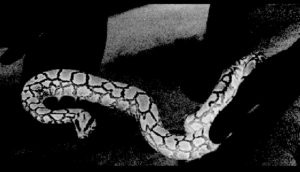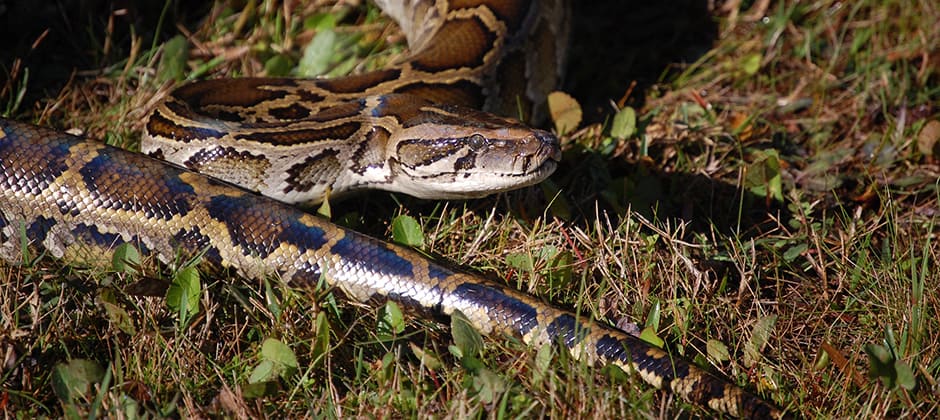Share this article
Looking beyond the visible spectrum to detect pythons
While contracted python hunters in Florida’s Everglades are attempting to eliminate the invasive species that’s devastating the natural ecosystem, they aren’t easy to see with the naked eye.
But video and still cameras using wavelengths beyond the visible light spectrum may help hunters detect snakes camouflaged throughout the landscape. “It could allow them to find many more of the pythons,” said Orges Furxhi, a researcher with imec, an international research and development company in Kissimmee, Florida.
Furxhi teamed up with Ron Driggers, a professor with the University of Central Florida’s College of Optics and Photonics, and Carl Arvidson, of Extended Reality Systems, to develop the imaging system. They wanted to determine at what wavelengths Burmese pythons (Python bivittatus) would pop out in contrast to their background.
The team took a couple pythons from a nearby zoo and measured how the different wavelengths of light bounce off of the snakes. They also tested these wavelengths out on snakes against 20 different backgrounds, such as grasses and palmetto leaves. They found that snakes popped out from their background the most when cameras used infrared light at 850 nanometers on the spectrum. The human eye only sees 400 to 700 nanometers of light. “Effectively it allows us to see the snake without the natural camouflage,” Driggers said.

Researchers found taking near-infrared images of pythons illuminates the snakes against the background. Courtesy Ryan Honeycutt
The team first took the photo, which showed a lighter background and a darker snake and inverted the images so that the snake appeared bright white against a black background. “The camera was designed such that it can see and separate the bright background from the dark python,” Furxhi said.
However, other dark snakes also appear in these photographs. “It allows us to detect snakes, not classify species of snakes,” Driggers said.
A PhD student at UCF, Jennifer Hewitt, is conducting an experiment in the field to determine how effective the new technology is at detecting pythons compared to the human eye or a camera with just the visible light spectrum. Her preliminary results show the newly developed camera is more effective than the human eye and regular cameras, Furxhi said.
“The next step is that we need to develop this a little further,” Furxhi said. He and his colleagues hope to receive funding to mount the camera on a drone and on top of vehicles to help initially detect the invasive snakes. He said the plan would be to for python hunters to use those methods as well as a hand-held camera.
While the researchers hope that the new technology can help hunters more successfully eliminate the pythons, which are destroying as much as 90% of some of the small mammals in the Everglades and are likely to move north, they said the technology can also be used to detect other species.
“The procedures, methods and technology could all be adapted to other species,” Furxhi said. “We’re looking at pythons in the Everglades and the band of light where pythons can be distinguished from the background, but we can conduct the same study for other species as well.”
Header Image: Burmese pythons are proliferating in the Florida Everglades, but they can be hard for python hunters to see with the naked eye. ©Liz Barraco/Florida Fish and Wildlife








